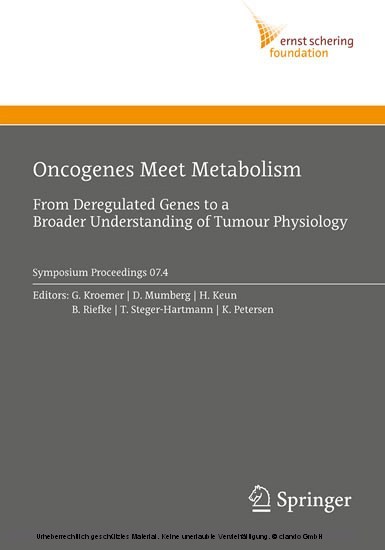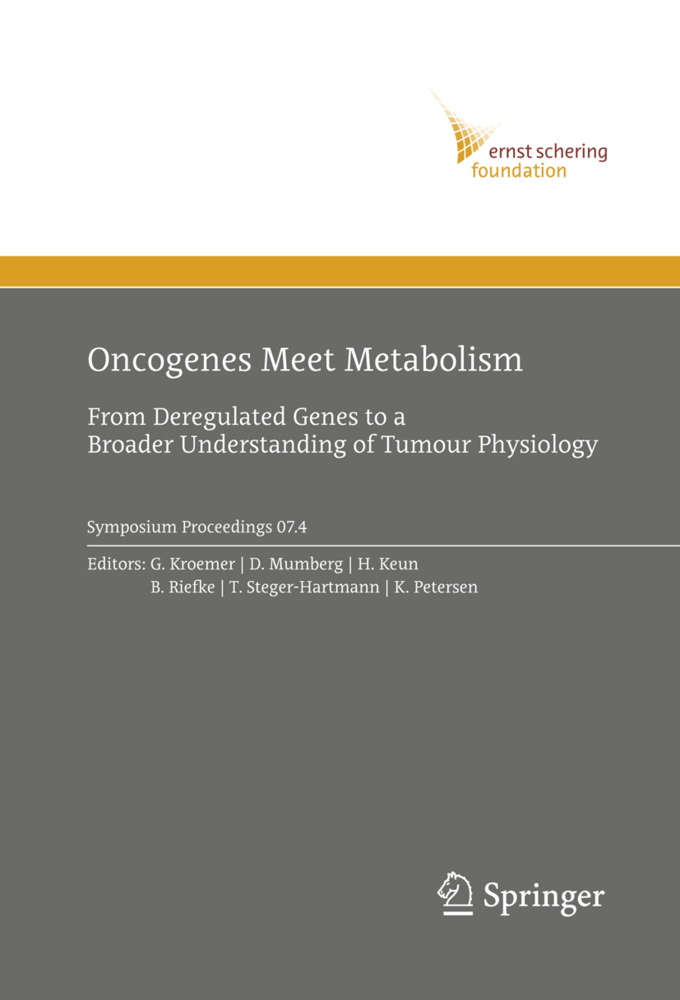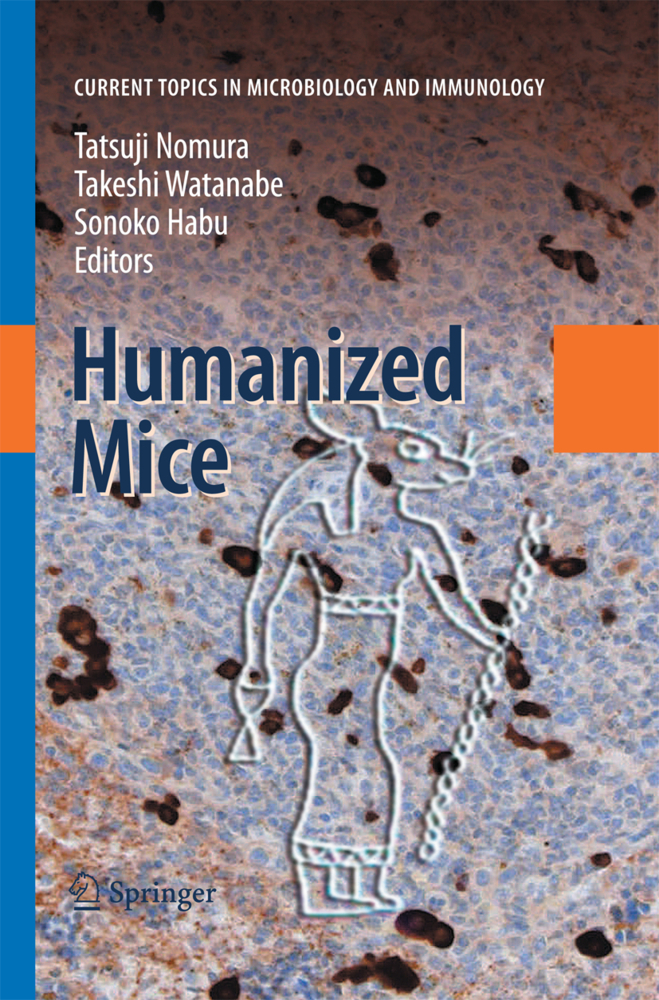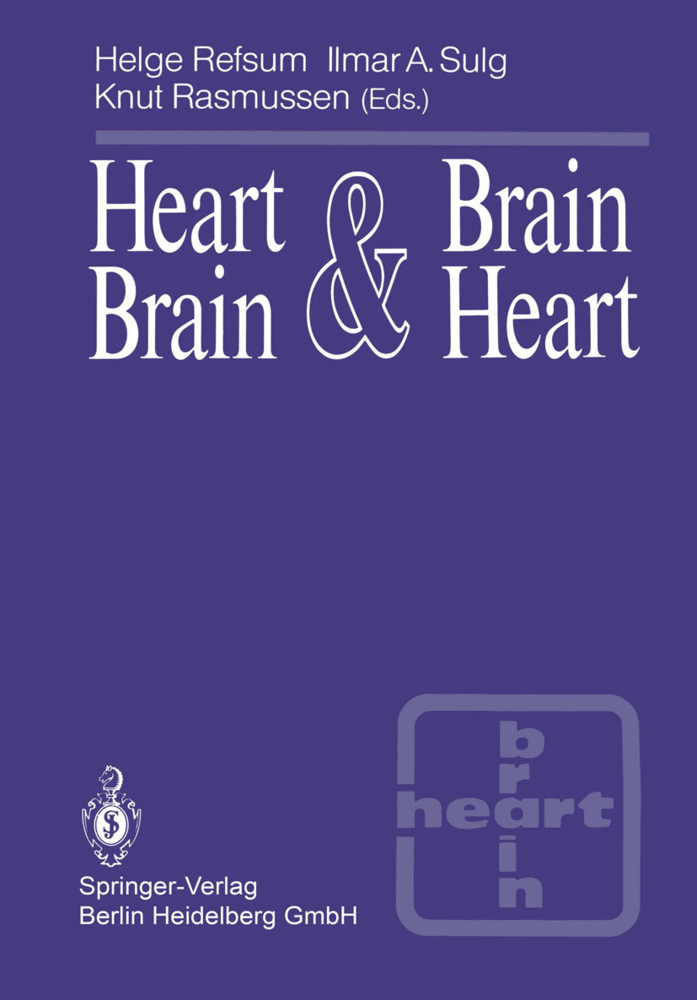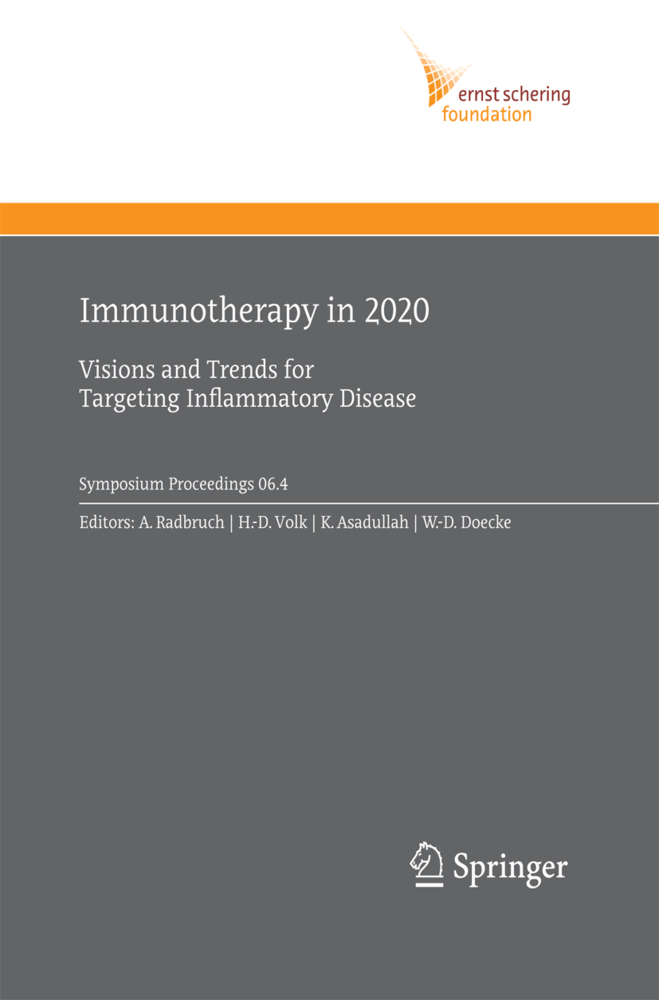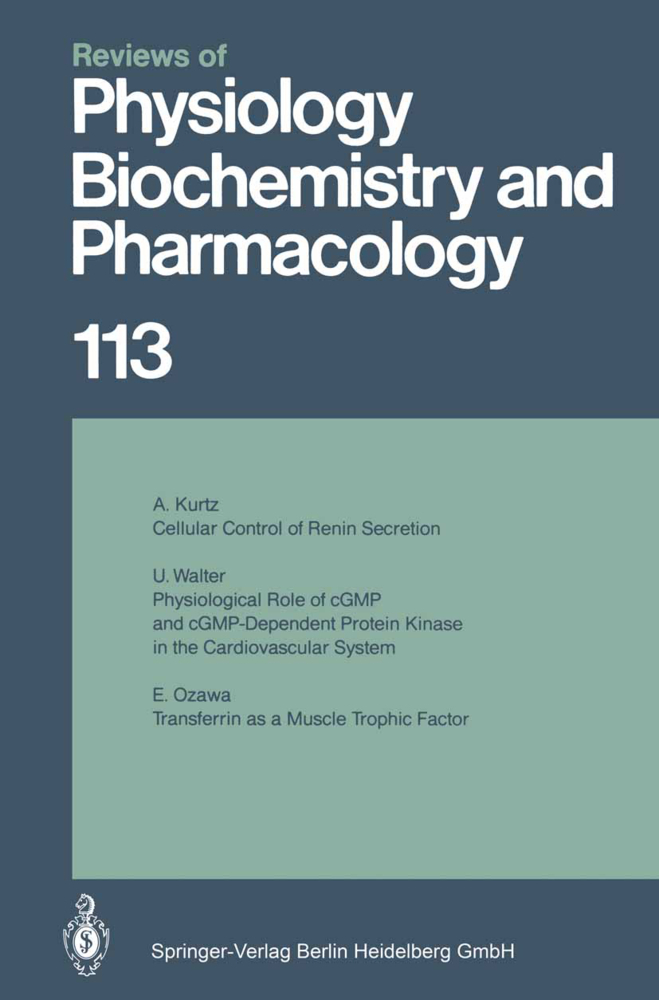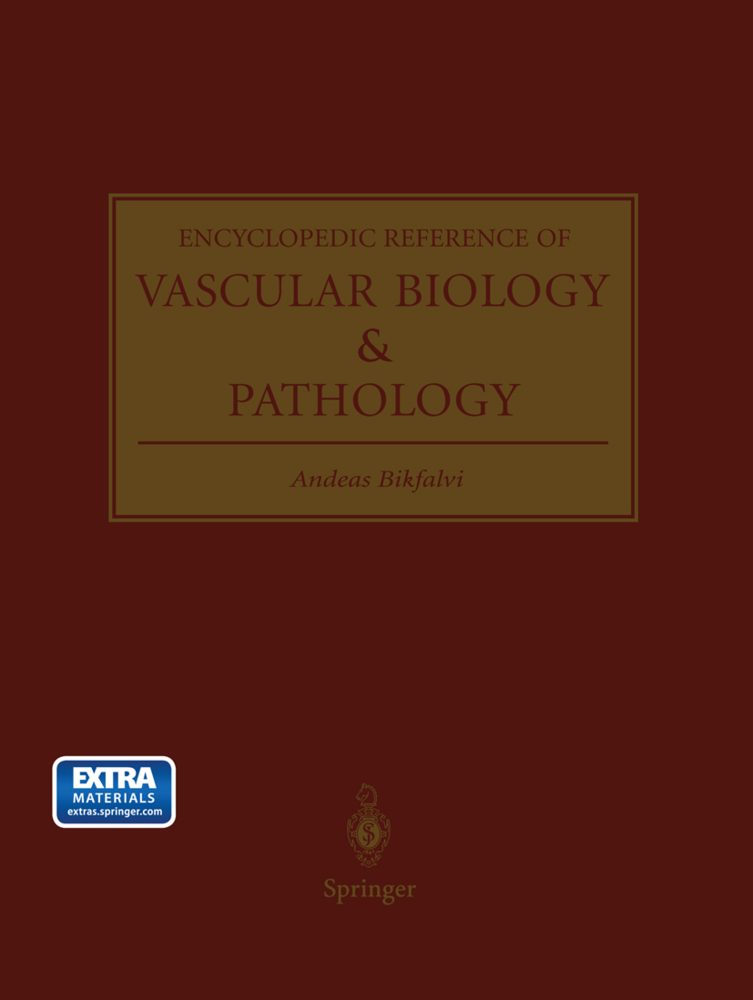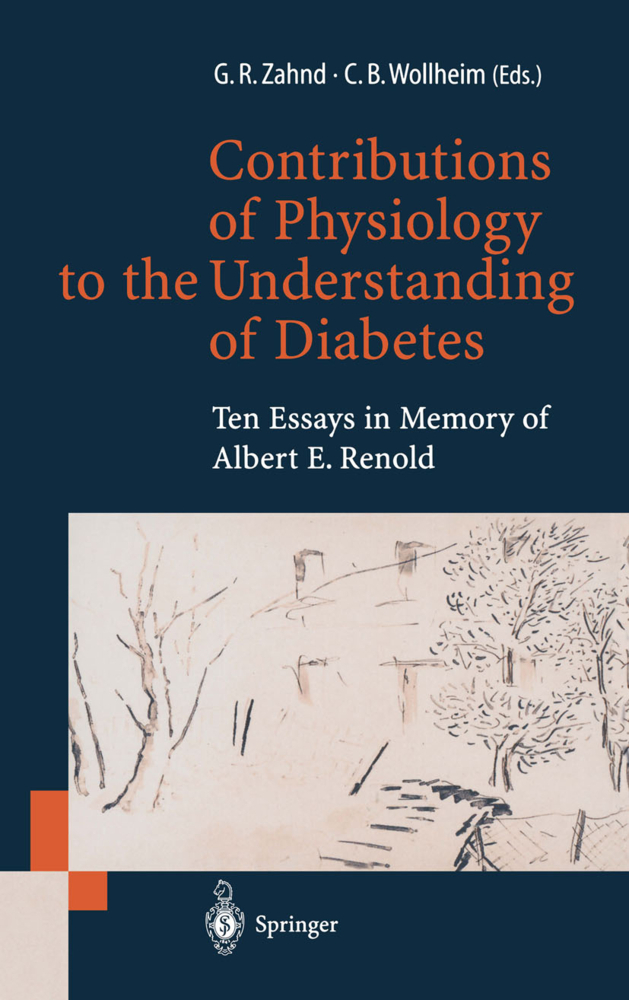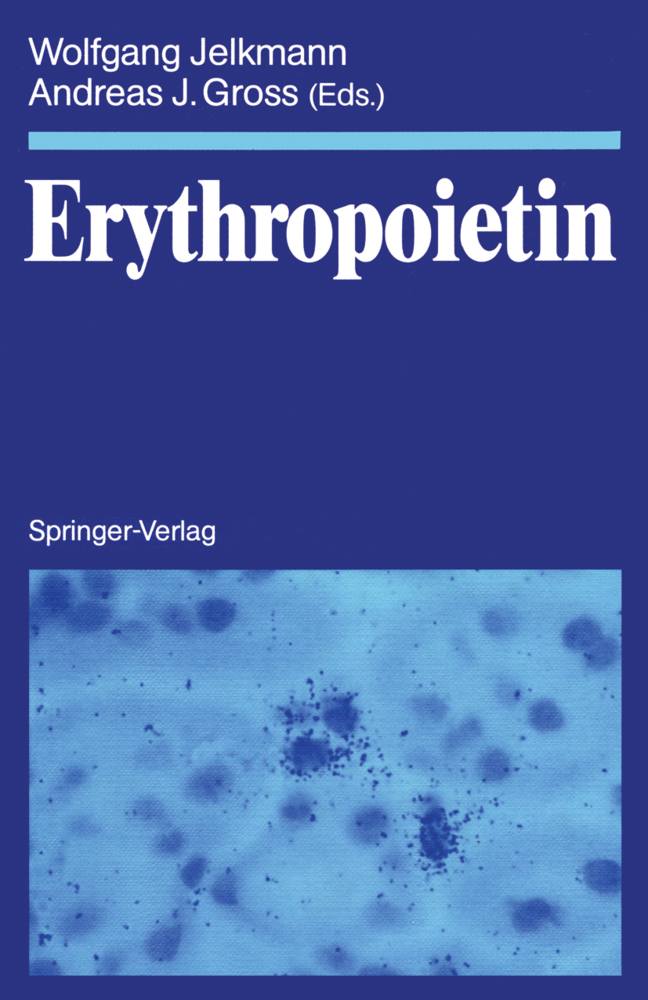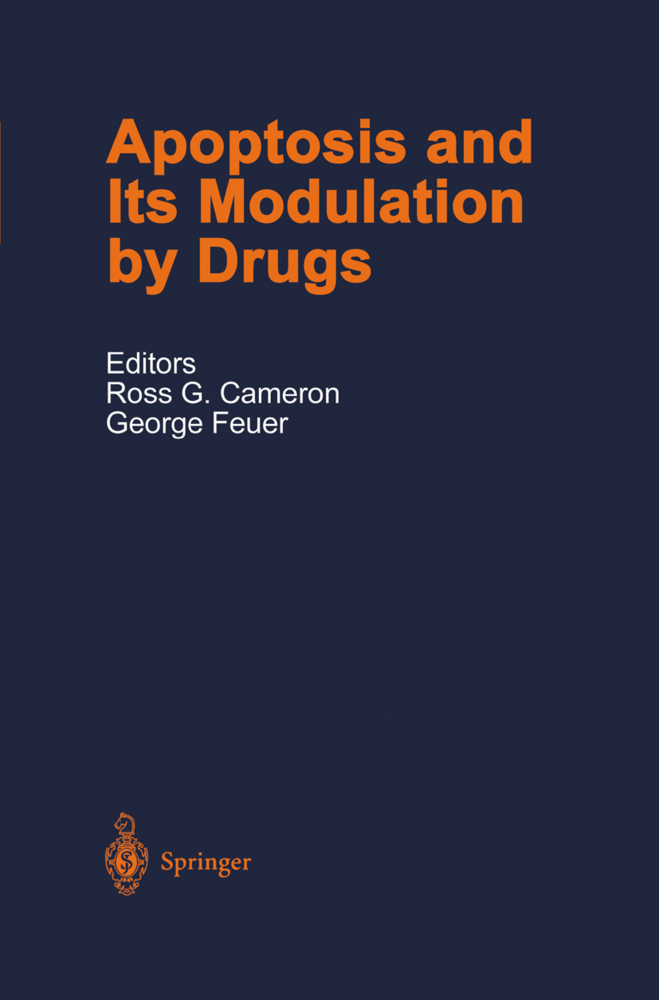Oncogenes Meet Metabolism
From Deregulated Genes to a Broader Understanding of Tumour Physiology
In 1920s, Otto Warburg described the phenomenon of aerobic glycolysis , the ability of tumour cells to convert glucose to lactate in the presence of normal oxygen conditions. Warburg s hypothesis of an altered metabolism in cancer cells found no immediate acceptance, though it was latter confirmed for most human tumours. With the advent of molecular biology the focus in tumour research has shifted towards the search for oncogenes. However, the interest in cancer molecular profiling eventually led to a renaissance of the Warburg effect trying to combine genetic alterations with effects on metabolism with the help of modern analytic technologies to rapidly analyze broad varieties of metabolites in various tissues and bodyfluids (metabonomics).
1;Preface;5 2;Contents;9 3;List of Editors and Contributors;11 4;Mitochondria and Cancer;16 4.1;1 Introduction;17 4.2;2 Mitochondrial Control of Apoptosis;18 4.3;3 Therapeutic Interventions for the Restoration of Mitochondrial Apoptosis in Cancer Cells;22 4.4;4 Reduced Oxidative Phosphorylation and Carcinogenesis;24 4.5;5 Hypothetical Links Between Apoptosis Resistance and Anaerobic Glycolysis at the MitochondrialMembrane;29 4.6;References;31 5;Role of the Metabolic Stress Responses of Apoptosis and Autophagy in Tumor Suppression;38 5.1;1 Origins of Metabolic Stress in Tumors;39 5.2;2 Activation of Tumor Suppression by Apoptosis in Response to Cellular Stress;40 5.3;3 Modulation of the Apoptotic Response by Cancer Therapy;40 5.4;4 Inactivation of Apoptosis in Tumor Progression;41 5.5;5 Autophagy Mediates Tumor Cell Survival to Metabolic Stress;42 5.6;6 Autophagy Is a Tumor Suppression Mechanism;44 5.7;7 Autophagy Suppresses Cell Death and Inflammation to Limit Tumor Progression;45 5.8;8 Autophagy Prevents Genome Damage to Suppress Tumorigenesis;46 5.9;9 Modulation of Tumor Cell Metabolism in Cancer Therapy;47 5.10;References;47 6;The Interplay Between MYC and HIF in the Warburg Effect;50 6.1;1 MYC Is a Major Human Oncogene That Encodes a Transcription Factor;51 6.2;2 Myc Target Genes in Tumorigenesis;53 6.3;3 Myc-E2F Regulatory Axis and DNA Metabolism and Replication;55 6.4;4 Effects of Antioxidants on Myc-Mediated Tumorigenesis, Reactive Oxygen Species and the Hypoxia- Inducible Factor;56 6.5;5 Collaboration of MYC and HIF in the Warburg Effect;58 6.6;References;61 7;Using Metabolomics to Monitor Anticancer Drugs;70 7.1;1 Introduction;71 7.2;2 Pharmacodynamic Markers;73 7.3;3 Conventional Cytotoxic Drugs;74 7.4;4 Cyclin-Kinase Inhibitor;76 7.5;5 HSP90 Inhibitor;76 7.6;6 Choline Kinase Inhibitor;77 7.7;7 HDAC Inhibitors;78 7.8;8 Vascular Disruption Agents;79 7.9;9 HIF-1a Inhibitor;81 7.10;10 PI3K Inhibitor;81 7.11;11 MAPK Inhibitor;82 7.12;12 Fatty Acid Synthase Inhibitor;82 7.13;13 Antimicrotubule Drug;83 7.14;14 Discussion;83 7.15;References;90 8;Biomarker Discovery for Drug Development and Translational Medicine Using Metabonomics;94 8.1;1 The Potential of the Metabolome to Fill the Biomarker Gap;95 8.2;2 Metabonomics in Toxicology;98 8.3;3 Metabonomics in Oncology;105 8.4;References;109 9;Pyruvate Kinase Type M2: A Key Regulator Within the Tumour Metabolome and a Tool for Metabolic Profiling of Tumours;114 9.1;1 Introduction;115 9.2;2 The Pyruvate Kinase Isoenzymes;116 9.3;3 Bifunctional Role of the Pyruvate Kinase Isoenzyme Type M2 Within the Tumour Metabolome;118 9.4;4 Interaction of M2-PK with Different Oncoproteins;124 9.5;5 Role of M2-PK in the Nucleus;130 9.6;6 Tumour M2-PK: A Biomarker for Metabolic Profiling of Tumours;130 9.7;7 Conclusions;133 9.8;References;133 10;Molecular Imaging of Tumor Metabolism and Apoptosis;140 10.1;1 Glucose Metabolism;141 10.2;2 AminoAcids;147 10.3;3 Apoptosis;155 10.4;4 Hypoxia;156 10.5;References;159 11;Minimally Invasive Biomarkers for Therapy Monitoring;168 11.1;1 Introduction;169 11.2;2 Methods;170 11.3;3 Results;175 11.4;4 Conclusions;199 11.5;References;201 12;Use of Metabolic Pathway Flux Information in Anticancer Drug Design;204 12.1;1 Introduction;205 12.2;2 Metabolic Profiles of Tumor Cells;205 12.3;3 Tumor Growth-Promoting Signals Influence Phenotype Expression via Nonoxidative Metabolism;208 12.4;4 Tumor Growth-Inhibiting Signals Limit Nonoxidative Metabolism;210 12.5;5 Metabolic Constraints of Cell Growth;210 12.6;6 Concluding Remarks;214 12.7;References;215 13;Cancer Diagnostics Using 1H-NMR-Based Metabonomics;220 13.1;1 Background;221 13.2;2 Current Status of Early Detection of EOC in the General Population;222 13.3;3 NMR-Based Metabonomics for the Analysis of Biofluids;223 13.4;4 H-NMR Analysis of Plasma and Cancer Detection;224 13.5;5 H-NMR-Based Metabonomics for Ovarian Cancer Detection;225 13.6;6 Conclusions and Future Directions;237 13.7;References;238 14;Human Met
Kroemer, G.
Mumberg, D.
Keun, H.
Riefke, B.
Steger-Hartmann, T.
Petersen, K.
| ISBN | 9783540794783 |
|---|---|
| Artikelnummer | 9783540794783 |
| Medientyp | E-Book - PDF |
| Auflage | 2. Aufl. |
| Copyrightjahr | 2008 |
| Verlag | Springer-Verlag |
| Umfang | 265 Seiten |
| Sprache | Englisch |
| Kopierschutz | Digitales Wasserzeichen |

